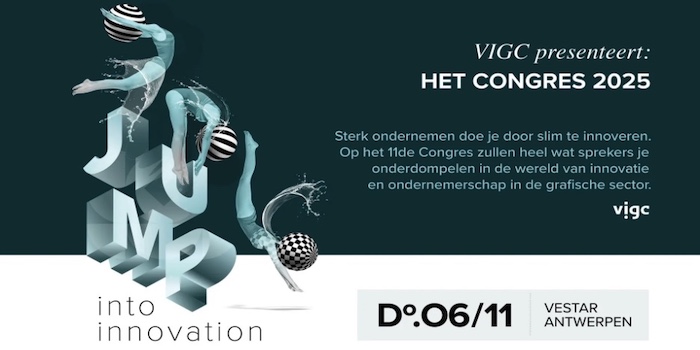The digital revolution of drupa 1990 versus the digital dominance at drupa 2016
 Everything was digital at drupa 1990, from the new generation scanners to managing automated offset presses. Linotype was one of the examples of the pre-press digitisation. Linotype seemed to be conquering the world with its LinoColor and System 1000. Pre-press manfufacturer Scitex gave a peak into the future of digital proofing. with its costly and slow iris proofprinter. On the AM Interantional stand I proudly showed visitors the AM Graphic Text organiser, a UNIX based super computer with screen and mouse to edit pages interactively. The AM GTO didn´t become a success, and neither did LinoColor and Iris. They were passed by in favour of Desk Top Publishing. AM International had another first at drupa that year, the first digital press, the AM ElectroPress. That was a liquid toner rotation press for the production of books. This monochrome press worked perfectly, but unfortunately there was no digital front end available powerful enough to drive it.
Everything was digital at drupa 1990, from the new generation scanners to managing automated offset presses. Linotype was one of the examples of the pre-press digitisation. Linotype seemed to be conquering the world with its LinoColor and System 1000. Pre-press manfufacturer Scitex gave a peak into the future of digital proofing. with its costly and slow iris proofprinter. On the AM Interantional stand I proudly showed visitors the AM Graphic Text organiser, a UNIX based super computer with screen and mouse to edit pages interactively. The AM GTO didn´t become a success, and neither did LinoColor and Iris. They were passed by in favour of Desk Top Publishing. AM International had another first at drupa that year, the first digital press, the AM ElectroPress. That was a liquid toner rotation press for the production of books. This monochrome press worked perfectly, but unfortunately there was no digital front end available powerful enough to drive it.
The fact that the digital developments were not an immediate success was not only due to technological imperfections, the average print shop just wasn´t ready. They preferred to invest in iron and the pre-press and digital workflow was not nearly ready. This took many years.
The digital revolution began at drupa 1990
 DTP, laser printers, image setters, affordable flatbed scanners were indicators of the digital revolution for the graphic industry. Quark showed version 3.3 of their lay-out software Xpress, something we would now call disrupting technology. With Extensions developers could add to Xpress, new possibilities like better gradient and typographic refinements. Possibilities which made DTP into competition for the traditional pre-press systems. And DTP grew rapidly after the 1990 introduction of the Apple Macintosh FX, the powerful replacement of the Mac SE. A desktop computer with a separate screen became the perfect work station for many graphic print shops. A relatively low investment and the short learning curve of DTP software seduced many companies to buy an Apple computer. Computers which became more powerful and could be equipped with larger and better screens, so that the colour display became good enough for the print industry.
DTP, laser printers, image setters, affordable flatbed scanners were indicators of the digital revolution for the graphic industry. Quark showed version 3.3 of their lay-out software Xpress, something we would now call disrupting technology. With Extensions developers could add to Xpress, new possibilities like better gradient and typographic refinements. Possibilities which made DTP into competition for the traditional pre-press systems. And DTP grew rapidly after the 1990 introduction of the Apple Macintosh FX, the powerful replacement of the Mac SE. A desktop computer with a separate screen became the perfect work station for many graphic print shops. A relatively low investment and the short learning curve of DTP software seduced many companies to buy an Apple computer. Computers which became more powerful and could be equipped with larger and better screens, so that the colour display became good enough for the print industry.
The much improved image quality of the Postscript image setters, which thanks to new screening technology as HQS and FM solved the moire problems, were the basis of the digital revolution as started at drupa 1990. The experience with screening is ow being used in digital presses to get the perfect print quality we now regard as normal.
Digital dominance at drupa 2016
According to the experts drupa 2016 will be the packaging drupa, and undoubtedly offset and digital press manufacturers will be showing break through technology for one of the last growth markets of our industry. Developments which will emphasise the digital dominance. Not just digital presses, but also the successors of the Heidelberg GTOF-S five colour press with CPTronic, first shown at drupa 1990, will prove this. Offset presses where every facet of the printing process, from print parameters to highspeed cameras, will be automated. This makes for the choice of print technology a simple one and based on two factors only, price and delivery time. Digital print technology will continue to score on variable data and small quantities, but offset will play a dominant role in the coming few decades.

De trainingen voor 2022 staan gereed. Kijk voor het volledige online aanbod van bestaande- en nieuwe trainingen op de website.
BLOKBOEK.COM EN PRINTMEDIANIEUWS: HET OPTIMALE DOELGROEP BEREIK


















